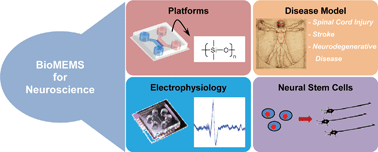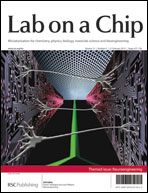Advances in microfluidics-based experimental methods for neuroscience research
Abstract
The application of microfluidics to neuroscience applications has always appealed to neuroscientists because of the capability to control the cellular microenvironment in both a spatial and temporal manner. Recently, there has been rapid development of biological micro-electro-mechanical systems (BioMEMS) for both fundamental and applied neuroscience research. In this review, we will discuss the applications of BioMEMS to various topics in the field of neuroscience. The purpose of this review is to summarise recent advances in the components and design of the BioMEMS devices, in vitro disease models, electrophysiology and neural stem cell research. We envision that microfluidics will play a key role in future neuroscience research, both fundamental and applied research.


 Please wait while we load your content...
Please wait while we load your content...